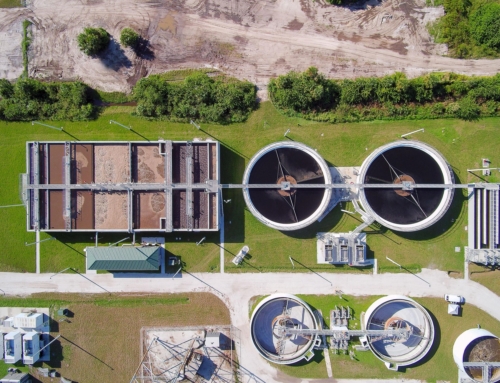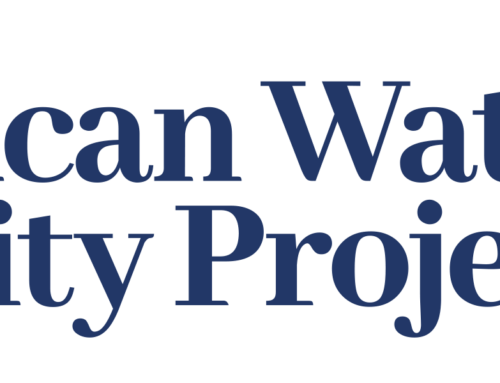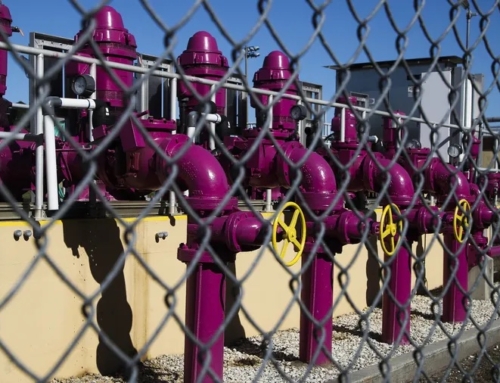Authored by American Water Security Project’s Executive Director Dr. Brandon D. Shuler, ‘Wastewater investments are key to protecting Tampa Bay’ originally appeared in the Tampa Bay Business Journal November 10, 2023.
According to the 2023 Economic Valuation of Tampa Bay, coauthored by the Tampa Bay Regional Planning Council and the Tampa Bay Estuary Program, Tampa Bay supports one in 10 jobs across the region, generating $32.1 billion in economic output. Measured in human services, the bay supports 207,068 jobs at an economic multiplier of $10.4 billion in annual income. In terms of ecosystem services, Tampa Bay habitats provide $52.3 million each year in carbon sequestration services and $714.5 million each year in denitrification services.
These numbers substantiate the fact that the bay itself is the lifeblood of the region’s economic health. We will poison that lifeblood unless we continue with systematic, financially disciplined investments in wastewater infrastructure improvements and septic tank removals in the watershed.
Continuing to rely on septic tank usage and leaky sewer systems isn’t only irresponsible, it’s dangerous. Most regional residents live in the coastal zone or in low-lying flood-prone areas. Our soils are porous, so sewage leaks and septic tank effluent move easily into our ground and surface waters, especially when there’s flooding from rain, storm surge, and/or king tides. It is scientifically well-established that sewage from septic tanks, leaky sewer lines, and overwhelmed wastewater treatment plants fuel harmful algal blooms including red tide.
Besides being a potent fertilizer, sewage also introduces myriad pharmaceuticals and diseases into our waters, while feeding dangerous, naturally occurring bacteria such as Vibrio vulnificus, the “flesh-eating bacteria” that more intense hurricanes such as Ian spread farther and wider across flood plains.
Infrastructure projects are urgently needed because of increasing flooding and rapid population growth. For example, Hillsborough County’s rapid and sprawling growth outpaces wastewater service availability, forcing homes and businesses to use septic tanks for wastewater collection and inadequate treatment. In an area with shallow water tables and susceptible to sea level rise, not to mention prone to flooding and storm surge, we are threatening our continued economic success by employing septic tanks.
Over the past five years, the Florida legislature and the Gov. Ron DeSantis’ administration have worked diligently to improve wastewater and stormwater policy, while expanding funding opportunities that help local governments tackle these projects. For example, they passed the Indian River Lagoon Protection Plan, which requires the removal of all septic tanks in impaired watersheds and the upgrading of all wastewater treatment facilities to advanced treatment.
Much stronger laws addressing sewage spills have allowed the Florida Department of Environmental Protection to wield a big stick while they help local governments find solutions to inadequate wastewater treatment. Locally, this year’s appropriations included $28 million for Hillsborough and Pinellas counties, with $13 million paying for a Gibsonton septic-to-sewage conversion and $5 million for a Palm River septic-to-sewer project.
We are long overdue for these upgrades. The American Society of Civil Engineers rates Florida’s water infrastructure at a lowly C-minus. Centralizing our wastewater collection and treatment is a great step to reaching many of the region’s goals, but it’s also responsible.
How do we get there?
Our partners at Florida TaxWatch recently released the 2023 research report “Septic-to-Sewer: Protecting Florida’s Ground and Surface Water” which outlines four commonsense recommendations that the American Water Security Project strongly endorses.
First, the Department of Environmental Protection must create and implement a statewide plan to improve, repair or develop water and wastewater infrastructure statewide. Emphasis must be placed on the development of central sewer lines, upgrades and expansions of wastewater treatment facilities and capacities, and the removal of septic tanks based upon established statewide priorities and demonstrated needs.
Second, the Florida Department of Environmental Protection must work with the Florida Legislature to pass legislation that incorporates the provisions of Executive Order 23-06 Achieving Even More for Florida’s Environment into Florida Statutes.
Third, not all septic system users live in areas where connection to centralized sewage is practicable. Where connection is not possible, the law should require users to install enhanced nutrient-reducing septic tanks within all Florida BMAPs or in areas with a high water table or flood-prone area, especially in coastal zones.
Finally, where conversions may economically challenge an owner, we urge the Florida Legislature to expand existing financial assistance programs and work with businesses and the nonprofit community to help owners remediate septic tank issues while developing and implementing a statewide septic tank inspection and monitoring program.
If we are serious about maintaining the health of the region’s economy, we must protect our waters with commonsense approaches like these.
Brandon D. Shuler is the executive director of the American Water Security Project. Shuler is an award-winning author, filmmaker, proud father and resident of St. Petersburg.





